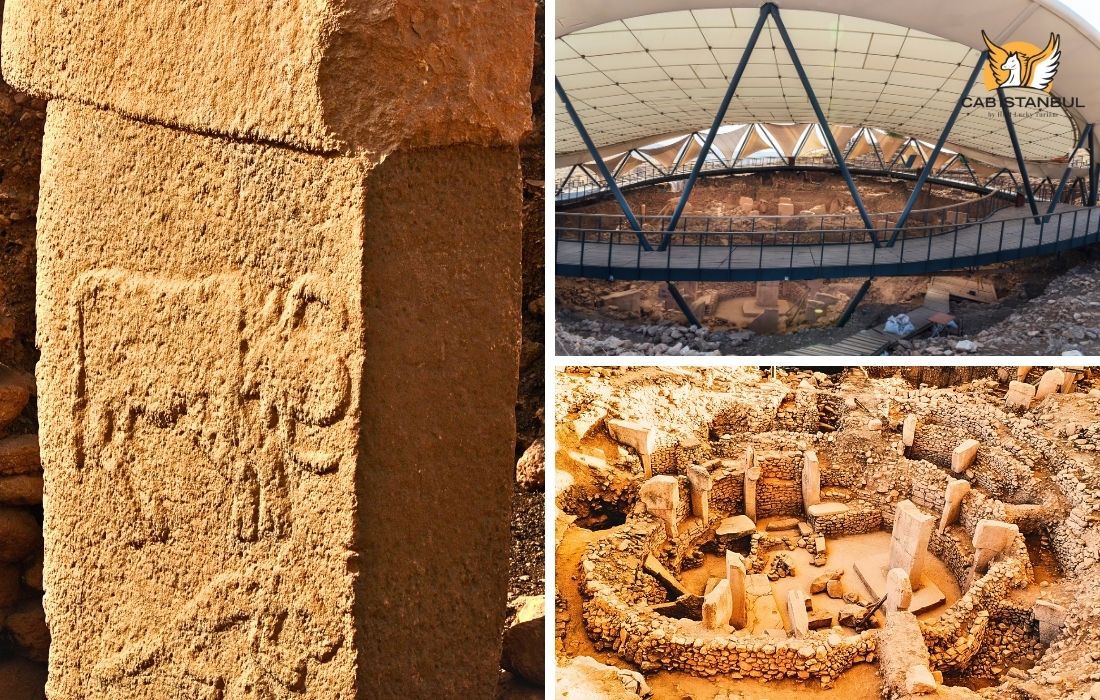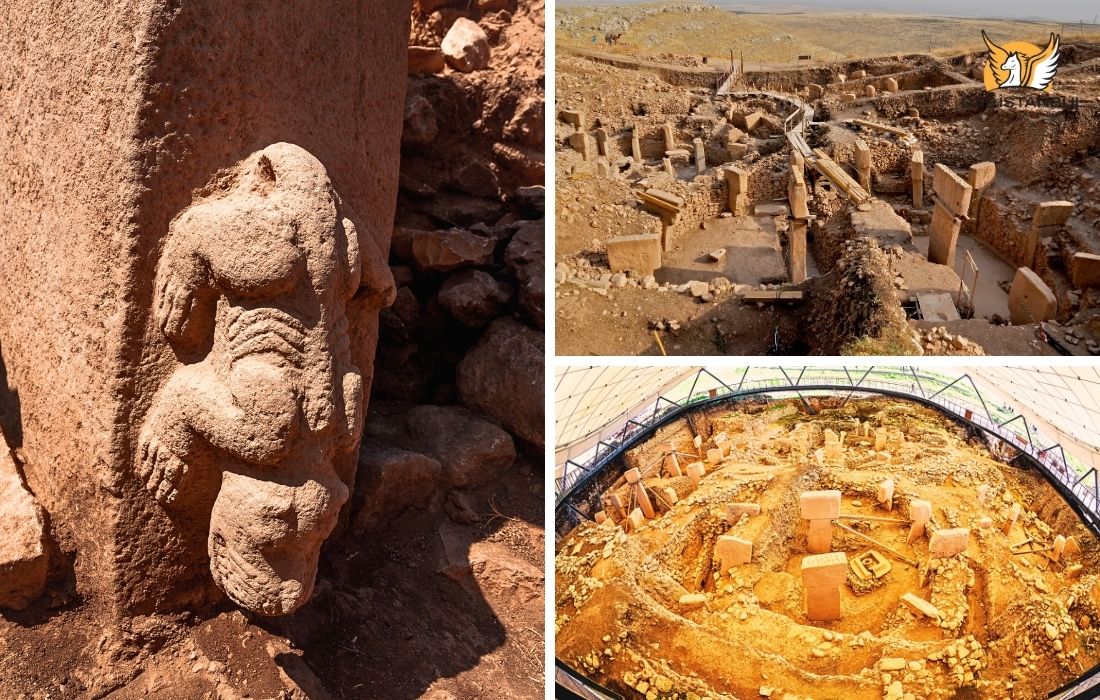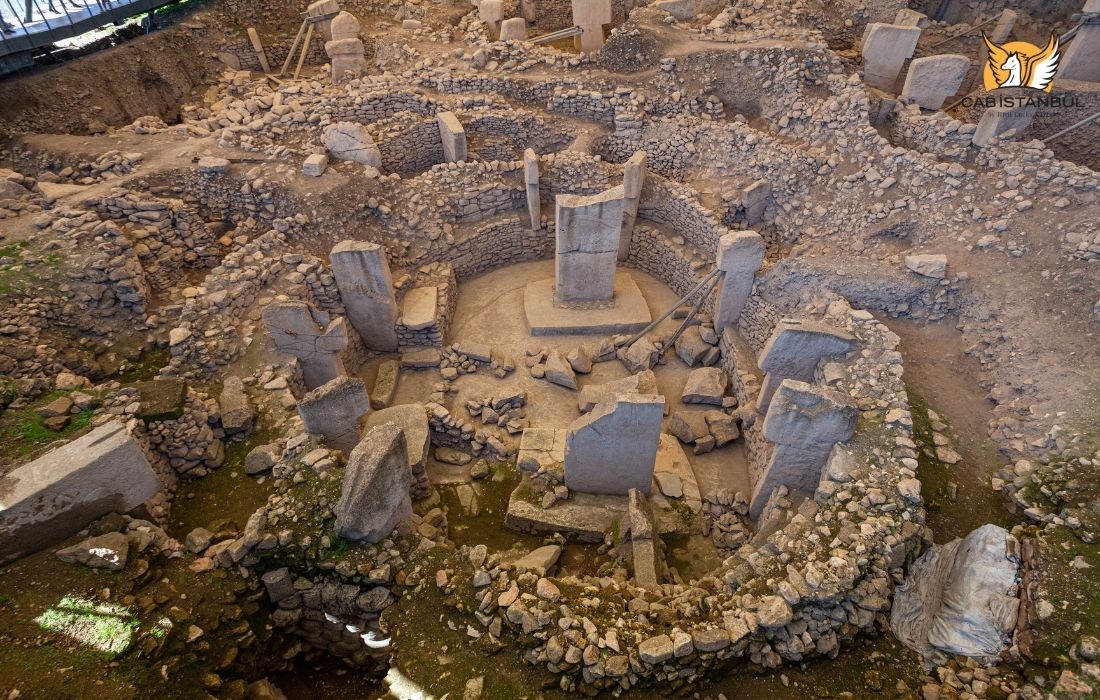Gobekli Tepe
2026-01-09

Turkey Temple Gobeklitepe
Gobekli Tepe is a groundbreaking archaeological discovery that has rewritten the narrative of human civilization, nestled atop a barren hill in southeastern Turkey. Dating back to 9600 BCE, this awe-inspiring site near Sanliurfa predates both the Egyptian pyramids and Stonehenge, making it the oldest known temple on Earth. Characterized by massive T-shaped pillars arranged in circular formations, Gobekli Tepe is believed to have been a center for communal rituals, spiritual gatherings, and early symbolic expression.
What sets Gobekli Tepe apart is its builders—hunter-gatherers who achieved extraordinary architectural feats without the aid of wheels or metal tools. The intricate carvings on the limestone monoliths—featuring lizards, foxes, snakes, and human-like forms—reflect a sophisticated and symbolic worldview. The enigmatic handbag motifs, the deliberate burial of the site, and the absence of domestic structures fuel theories of ritualistic rather than residential use.
Located just 12 km from Urfa, a city steeped in Abrahamic mythology, Gobekli Tepe has become a magnet for archaeologists, historians, and cultural tourists. Designated a UNESCO World Heritage Site in 2018, it stands as a powerful testament to humanity’s early leap toward organized belief systems. The monoliths and figures uncovered during ongoing excavations suggest a prehistoric society deeply engaged in communal identity and spiritual practices.
Whether you're passionate about ancient ruins, fascinated by mysteries of early religion, or simply captivated by humankind’s journey, Gobekli Tepe in Turkey is an essential destination. Visit during spring or fall for the best weather, and don’t miss the Sanliurfa Archaeological Museum for an immersive understanding of this transformative site.
Enjoy premium comfort with our chauffeur-driven car rental in İstanbul and private transfer services from İstanbul to Sanliurfa and Gobekli Tepe. Travel in luxury, on time, and stress-free—ideal for individual explorers or group tours.
Go Bekli Tepe
📍 Things to See in Göbekli Tepe
Exploring Göbekli Tepe offers more than a glimpse of ancient stones—it’s an immersive encounter with the origins of human belief systems. Though only a small portion of the site has been excavated, there are many powerful things to see in Göbekli Tepe that reveal the spiritual and artistic genius of Neolithic communities.
🪨 T-Shaped Monolithic Pillars
The most striking features are the T-shaped limestone pillars, some towering over 5 meters tall and weighing up to 10 tons. Carved over 11,000 years ago, they are arranged in circular enclosures and are believed to represent ancestral spirits or deities. Two central pillars in each enclosure dominate the layout, possibly serving as focal points for rituals or gatherings.
🎨 Intricate Relief Carvings
Detailed carvings of foxes, boars, snakes, scorpions, and birds decorate many of the pillars. These Göbekli Tepe carvings are among the earliest examples of symbolic art in human history and offer a glimpse into the spiritual worldview of early humans. One of the most famous is the “lizard carving,” which reflects both artistic skill and possibly shamanistic beliefs.
👜 The Mysterious Handbag Motif
One of the most debated symbols in Göbekli Tepe is the so-called handbag motif. Found on several pillars, it resembles a modern handbag and has also been spotted in ancient Mesopotamian sites. While its exact meaning remains unclear, many believe it held ritual or cosmological significance.
🏛 Circular Enclosures (Temples)
The enclosures—labelled as Enclosure A, B, C, D, etc.—each contain a different layout, orientation, and iconography. Some feature stylized human arms carved along the pillars’ sides, suggesting that the pillars themselves were symbolic beings. These enclosures are considered the earliest known temple structures ever built by humans.
🏺 Artifacts and Tools
Near the site, archaeologists have unearthed stone tools, figurines, and animal bones, many of which are displayed at the Şanlıurfa Archaeological Museum. These items help complete the story, offering clues about ritual practices, feasting, and the symbolic lives of the people who built Göbekli Tepe.
👀 Panoramic Hilltop View
The site’s elevated position offers stunning views of the Germuş Mountains and the expansive plains of Upper Mesopotamia. It’s easy to see why ancient people chose this hill—it commands attention, both visually and spiritually.
Gobekli Tepe Site In Turkey

Göbekli Tepe History
The history of Göbekli Tepe begins over 11,000 years ago in the Pre-Pottery Neolithic era, making it the oldest monumental temple complex ever discovered. Located in southeastern Turkey, near the ancient city of Şanlıurfa, Göbekli Tepe challenges long-held assumptions about the timeline of human civilization.
Constructed by hunter-gatherer societies between 9600 and 7000 BCE, the site features massive T-shaped limestone pillars arranged in circular enclosures. These structures were built without metal tools, wheels, or domesticated animals—yet they display extraordinary craftsmanship. The pillars are adorned with elaborate carvings of animals, humanoid figures, and abstract symbols, hinting at a deeply spiritual culture.
One of the greatest mysteries in the history of Göbekli Tepe is its intentional burial around 8000 BCE. Scholars speculate this may have been a ritual act or an effort to preserve sacred ground. Excavations led by Klaus Schmidt in the 1990s uncovered only a small portion of the site, revealing its immense scale and historical significance.
Unlike later settlements, Göbekli Tepe lacks evidence of everyday life—no homes, hearths, or farming tools—suggesting it served exclusively religious or ceremonial functions. This discovery rewrote the narrative that religion followed agriculture; instead, Göbekli Tepe's history implies that belief systems may have preceded the rise of farming and helped unify early human communities.
Today, Göbekli Tepe in Turkey is recognized as a UNESCO World Heritage Site, attracting researchers, spiritual seekers, and history lovers from around the globe. It remains a living mystery—one that continues to reshape our understanding of early human society.
📍 Göbekli Tepe Temple
Often referred to as the world’s first temple, Göbekli Tepe stands as a monumental testament to humanity’s earliest spiritual impulses. Unlike temples of later eras, there are no altars, no statues, and no inscriptions—yet everything about the site suggests sacred intent.
Each enclosure within the site appears purpose-built for ritual activity. The giant T-shaped pillars, some arranged in concentric circles, evoke a gathering space for spiritual ceremonies. Their carvings—with animals, humanoid forms, and abstract signs—offer clues to a complex symbolic language.
The absence of domestic structures supports the theory that Göbekli Tepe was not a settlement but a destination, a sacred place where groups possibly met seasonally to conduct communal rites or shamanic rituals. This flips conventional wisdom: perhaps religion came before agriculture, not the other way around.
The term Göbekli Tepe temple is not without debate. “Temple” may imply an organized religion, which is difficult to verify in such early societies. Yet the scale, complexity, and energy required to construct these enclosures signal a cultural focus on the spiritual and the unseen.
In essence, this temple on a hill is a silent sermon from the distant past, whispering that human identity has always been shaped as much by belief as by survival.
Ancient Ruins Turkey Gobekli Tepe

Visit Göbekli Tepe
If you're planning to visit Göbekli Tepe, prepare to step into one of the most extraordinary archaeological sites on Earth. Located in southeastern Turkey, just 12 km from Şanlıurfa (also known as Urfa), this ancient sanctuary is considered the oldest temple complex in human history—older than Stonehenge or the Egyptian pyramids.
The site is easily accessible from Şanlıurfa GAP Airport, with convenient transport options such as airport transfers, local taxis, or private chauffeur-driven car rentals. The drive from the city center to Göbekli Tepe takes approximately 25 minutes, making it an ideal half-day excursion for travelers seeking both convenience and depth.
Your visit begins at the modern Göbekli Tepe Visitor Center, where you'll find detailed exhibits, multilingual information panels, a café, and a gift shop. From there, a shuttle transports you to the summit of the site itself. Elevated walkways offer panoramic views of the excavated T-shaped pillars, some carved with lizards, foxes, and abstract Neolithic symbols.
To enhance your visit, guided tours (available in English and other languages) are highly recommended. These provide in-depth explanations about the symbolic carvings, construction techniques, and cultural meaning of the site. Self-guided audio tours via mobile apps are also available for independent travelers.
🔍 Best Time to Visit:
The ideal seasons to visit Göbekli Tepe are spring (April–May) and autumn (September–October). These months offer mild weather, perfect for exploring the open-air site.
🧳 What to Bring?
Wear comfortable shoes, bring sunscreen and water, and be prepared for limited shade. While the site is compact, it carries monumental historical significance.
Visiting Göbekli Tepe in Turkey is more than just tourism—it's a powerful encounter with the very roots of spiritual and social life. For those seeking meaning, mystery, and a deeper connection to human origins, this ancient hilltop sanctuary is a must-see.
Göbekli Tepe Pillars
The pillars of Göbekli Tepe are its most iconic feature—towering T-shaped monoliths carved from local limestone, standing between 3 to 6 meters tall. Arranged in circular and oval formations, each pillar weighs up to 10 tons and reflects the astonishing engineering capabilities of Neolithic communities.
These Göbekli Tepe pillars are not just structural but deeply symbolic. Many are engraved with detailed reliefs of animals like foxes, boars, snakes, and birds, as well as abstract symbols and stylized human arms. Some central pillars appear anthropomorphic, possibly representing deities or ancestral spirits.
The layout of each enclosure—with two larger central pillars surrounded by smaller ones—suggests a deliberate and possibly sacred architectural plan. The positioning and orientation hint at potential astronomical alignments or ritual significance. Despite the absence of writing, these pillars serve as a prehistoric form of storytelling and spiritual expression.
Their presence, created without advanced tools or permanent settlements, makes the Göbekli Tepe pillars a landmark of human innovation and a window into an ancient worldview that continues to captivate researchers today.
Göbekli Tepe Mysteries
The allure of Göbekli Tepe lies not only in its age but in the many questions it leaves unanswered. Even after decades of excavation, the site remains one of the world’s greatest archaeological enigmas. The purpose, meaning, and fate of this site are wrapped in layers of symbolic stone and intentional silence.
Why did hunter-gatherers—with no permanent homes or agricultural systems—build such massive monumental structures? What drove them to organize labor, carve detailed reliefs, and erect pillars weighing tons? And most intriguingly, why was the entire site deliberately buried around 8000 BCE?
Some scholars suggest that the Göbekli Tepe mysteries point to an early form of organized religion, one that predates temples in Mesopotamia and Egypt. Others propose shamanistic practices or seasonal gathering points that helped bond early human tribes.
The presence of the “handbag” motif, carved animals with symbolic meanings, and lack of everyday tools raises further questions. Are these religious symbols, celestial maps, or cultural codes we no longer understand?
Whatever the answers, the mysteries of Göbekli Tepe continue to redefine what we know about early civilizations—inviting us to dig deeper, both literally and intellectually.

Write a Comment !